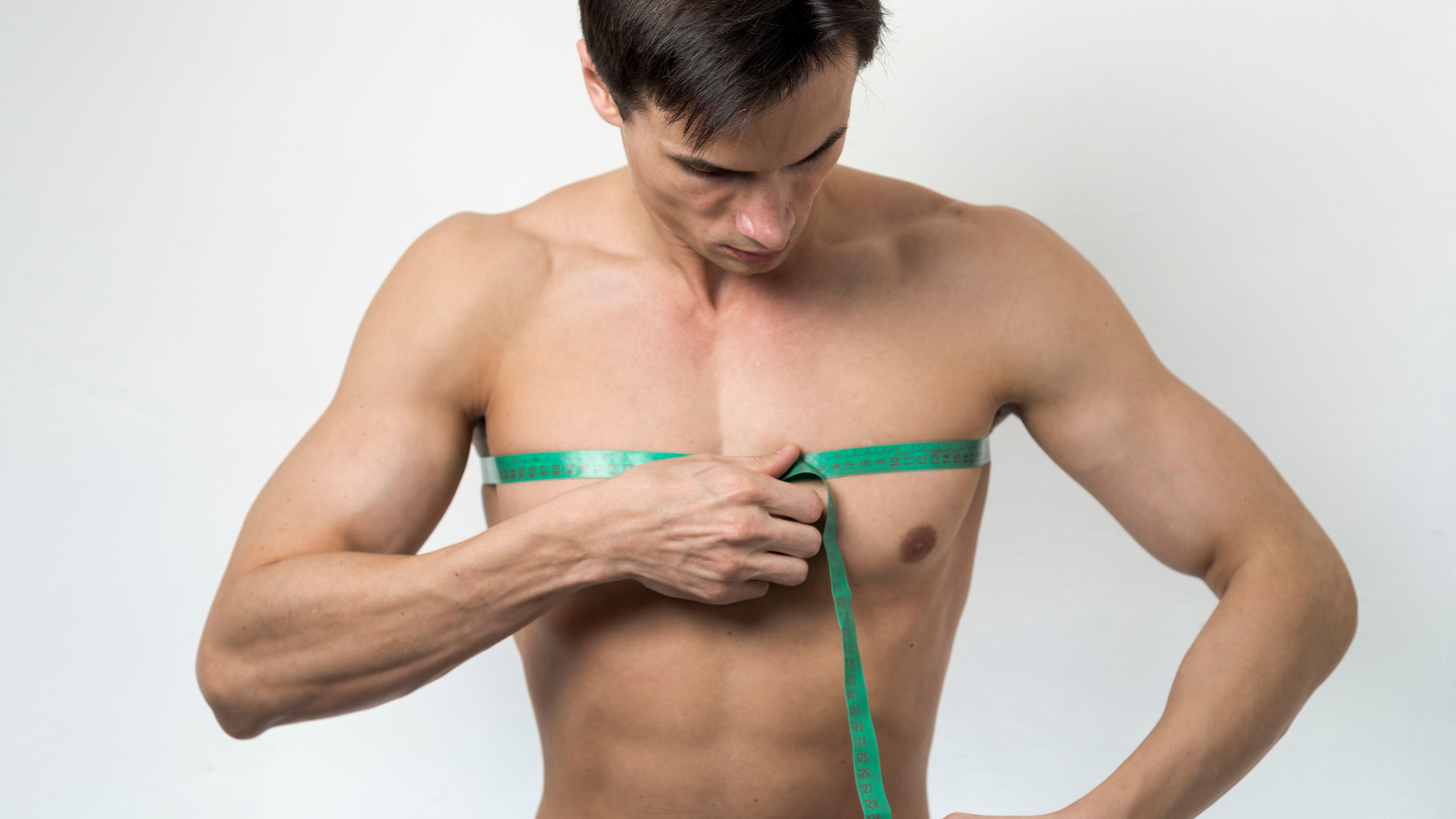You’re not alone if you notice puffy or tender chest tissue. Gynecomastia affects many boys during puberty and up to two-thirds of adult men worldwide. The good news? Most cases are harmless and, with the right plan, you can shrink swelling, ease pain, and feel confident again. At the same time, it’s smart to rule out deeper issues.
Hormone-medicines, liver or thyroid problems, and even Testosterone Replacement Therapy (TRT) can tip the estrogen-to-testosterone balance toward breast growth. This guide breaks down what happens, why it happens, and how you can fix it, using language that makes sense even if science class feels like a blur.
Key Takeaways
- Gynecomastia is true gland growth, not chest fat; a firm disk under the nipple, often tender, caused by estrogen-testosterone imbalance.
- Common triggers include puberty, aging, obesity, alcohol, certain medicines, thyroid or liver disease; symptoms may itch early, then lumps harden over months.
- Diagnosis uses exam, hormone labs, sometimes ultrasound; rule out pseudogynecomastia and rare male breast cancer when lumps grow fast, feel hard, or leak.
- Treatment starts simple: watchful waiting, nutrition, exercise, weight loss; tamoxifen can shrink painful tissue; surgery works well when other steps fail.
- On TRT, extra testosterone can aromatize to estrogen; prevent with low doses, fat loss, medication review; don’t stop therapy abruptly; work with your specialist.
Table of Contents
What Is Gynecomastia?
Gynecomastia is the real enlargement of male breast gland tissue, not just chest fat. It shows up as a firm, rubbery disk under one or both nipples. Doctors blame an off-balance between the hormones estrogen (which grows breast cells) and testosterone (which keeps them small)..
Who gets it? Newborns feel mom’s estrogen for a few weeks, nearly half of teen boys swell during puberty, and up to 65 percent of adult men notice it later in life. The spike often fades once hormones settle, but in about 20 percent of adults the tissue sticks around and may even grow.
Top triggers include natural aging, obesity (extra fat turns testosterone into estrogen), heavy alcohol use, some antidepressants, heartburn drugs, steroids, and cannabis. Certain health issues like hyperthyroidism or chronic liver disease, also raise risk. You’ll feel tenderness or itching at first. Over months the lump firms up.
Doctors use a quick exam plus blood tests or an ultrasound to confirm it isn’t fat (called pseudogynecomastia) or, rarely, male breast cancer, which still affects about 2,700 U.S. men a year. Most mild cases need only watchful waiting, better diet, and exercise. If the gland keeps growing or hurts, medicines like tamoxifen, an estrogen blocker, shrink tissue in many patients and are safe for short use.
Surgery (subcutaneous mastectomy or lipo-excision) is the final, highly effective step when other fixes fail.
Gynecomastia And Testosterone Replacement Therapy
Extra testosterone can aromatize, convert, to estrogen through an enzyme in body fat. High estrogen then fires up breast tissue growth.
Risk factors on TRT
- Starting at high doses that spike levels fast
- High body-fat percentage (more aromatase)
- Genetics that favor aromatase activity
- Using anabolic steroids alongside TRT
Prevention tips
- Dose low and slow. Your doctor should check blood work every 8–12 weeks and adjust.
- Stay lean. Even a 5 percent weight drop lowers aromatase action.
- Ask about aromatase inhibitors. Low-dose anastrozole or exemestane can block conversion when estrogen jumps, but many men never need them
- Mind other meds. Some heartburn or blood-pressure drugs raise estrogen; review your list.
Treatment if gynecomastia appears on TRT follows the same ladder: watchful waiting first, then tamoxifen 20 mg daily for three months if painful or embarrassing lumps persist, and lastly surgery. Importantly, don’t stop TRT on your own; sudden drops can cause mood crashes and muscle loss. Let your hormone specialist fine-tune the plan.
Most men who tackle the root cause, balancing hormones, see swelling shrink within six months. Maintaining a healthy weight, limiting alcohol, and prioritizing sleep keep estrogen in check long-term.
Balance Your Hormones, Boost Your Confidence
Frequently Asked Questions
Yes. Up to half of boys see temporary breast growth that fades within two years as hormones level out.
It’s usually benign. Get checked if lumps grow fast, feel hard, or leak fluid to rule out rare cancer.
Most teens improve within 6–24 months. If it lasts beyond two years, see an endocrinologist.
Fat loss often shrinks mild cases by lowering estrogen, but dense gland tissue may remain and need other treatment.
They can, yet many men manage well without them. Use only if blood tests show high estrogen.
Choose surgery if lumps persist or enlarge after six months of medical therapy, or if they cause major distress.
Yes—anti-androgens, some antidepressants, heartburn meds, and anabolic steroids are common culprits.
A doctor uses a physical exam, hormone blood tests, and sometimes ultrasound or mammography to confirm gland tissue.
Gynecomastia itself doesn’t cause cancer, but any new, firm, one-sided lump needs evaluation to be safe.
Not always. Once true gland tissue forms, it may stay. Balancing hormones early gives the best chance of shrinkage.

